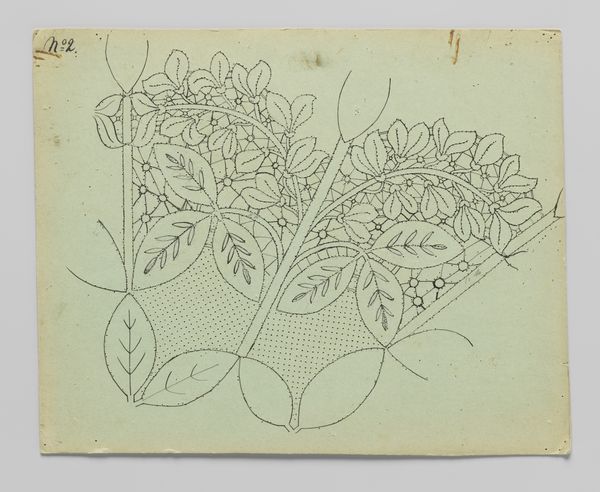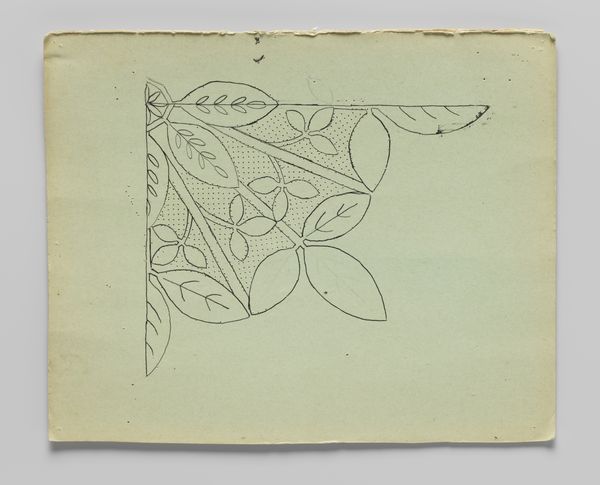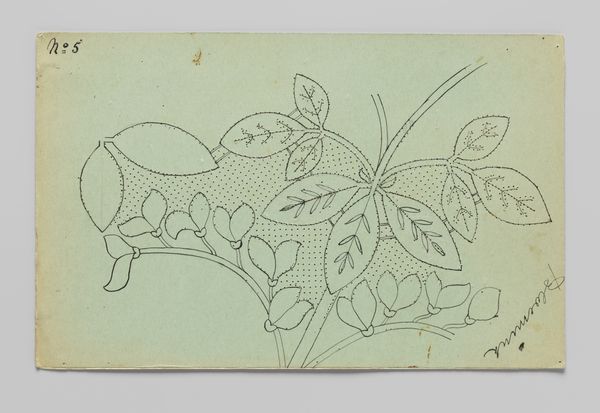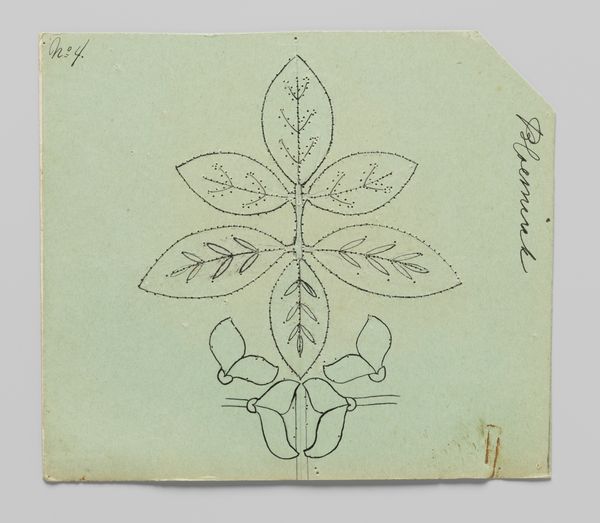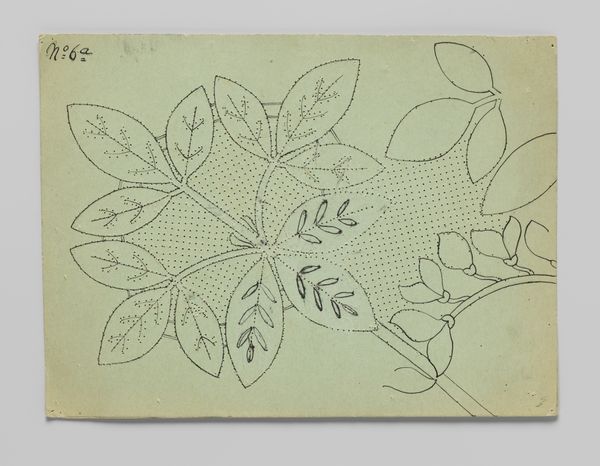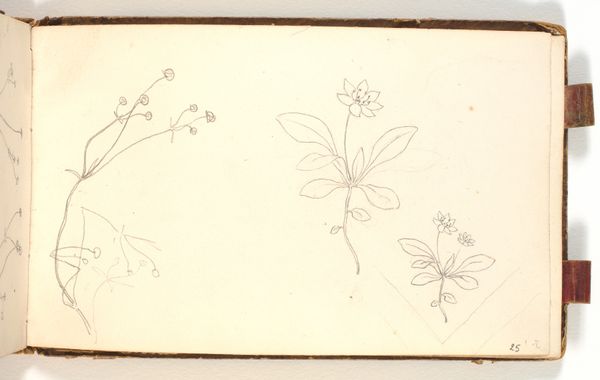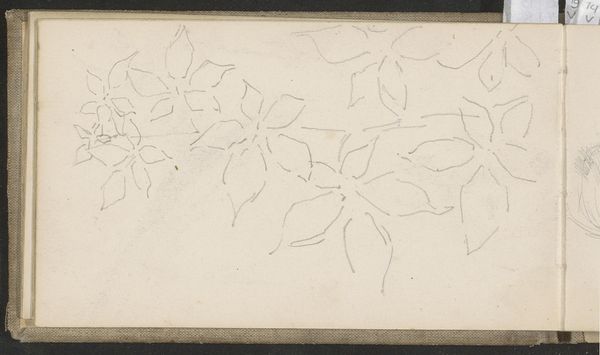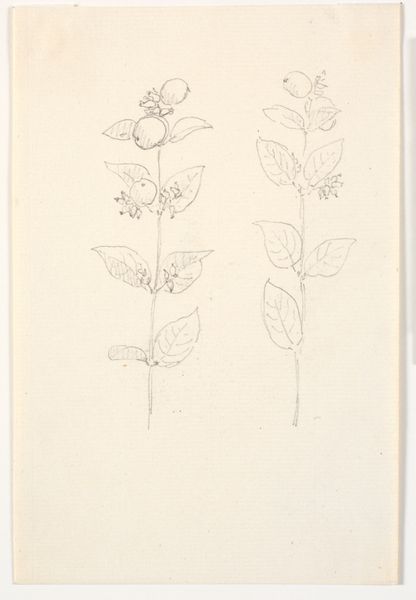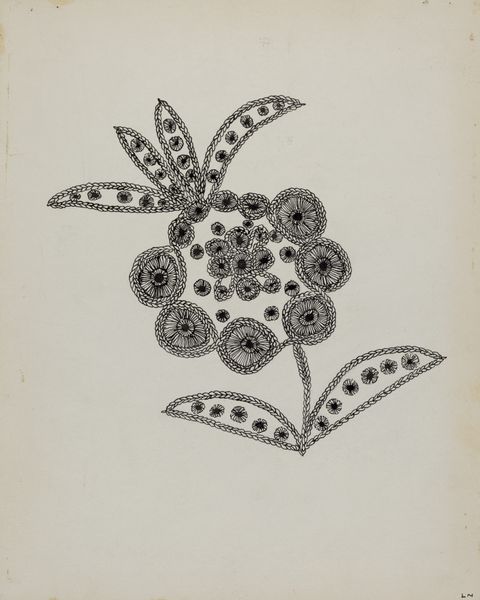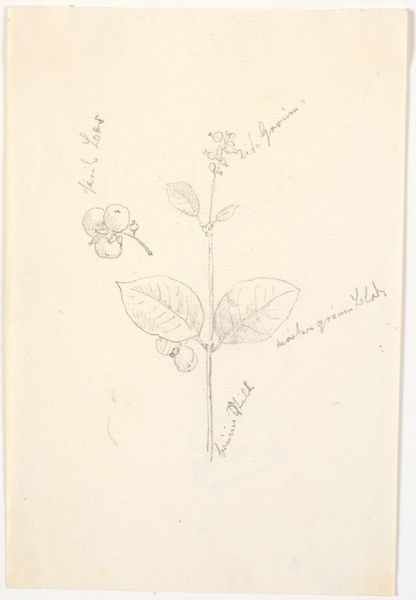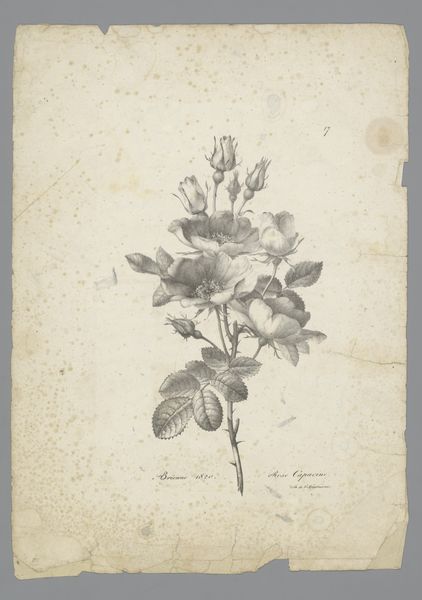
Kantpatroon voor een kleed van kloskant met goudenregentakken en -bloemen c. 1912
0:00
0:00
drawing, paper, ink
#
drawing
#
art-nouveau
#
paper
#
ink
#
geometric
#
line
#
decorative-art
Dimensions: length 29 cm, width 23 cm
Copyright: Rijks Museum: Open Domain
Curator: Let’s spend some time contemplating this design, “Lace Pattern for a Dress with Golden Rain Branches and Flowers,” created around 1912 by Louise Wilhelmina van der Meulen-Nulle. Editor: My first thought? Exquisite precision. I’m drawn to the delicate balance between botanical inspiration and this underlying geometric structure. Curator: Absolutely. This piece, rendered in ink on paper, exemplifies the Art Nouveau style. You see how the flowing, organic forms of the golden rain—or laburnum—are meticulously organized into a repeating motif suitable for lace making? Editor: Precisely! It’s a fascinating tension: nature meticulously regimented for industrial application. Consider the labor involved—not just the artist drafting the pattern, but the countless hours of lacemaking to bring this design into tangible existence. A beautiful piece for its time. Curator: Yes, the rhythmic repetition invites the viewer into a state of contemplation. Each dot, each carefully drawn line, feels almost like a meditation, doesn't it? It's as if Van der Meulen-Nulle is capturing the very essence of a golden afternoon in early summer. The blooms become miniature stars. Editor: Indeed! What's so often overlooked is how so-called "decorative arts" have really powered technology; How industrial textile production became such an important element within the colonial project globally. Here we are offered a glimpse behind the scenes of such labor through a very specific type of decorative art! It provides insight into women’s work behind textile and clothing. Curator: So true. The artistry evident in something destined to be endlessly duplicated truly prompts you to reflect. What we perceive as "delicate" was part of quite an exhaustive industry and global economy. It really calls for appreciation of the unsung creative labor within textile manufacturing. Editor: Agreed. It is a privilege to have witnessed that, however briefly. Thanks for revealing a pattern that hints at deeper societal issues and how the human touches everything with thought.
Comments
No comments
Be the first to comment and join the conversation on the ultimate creative platform.
